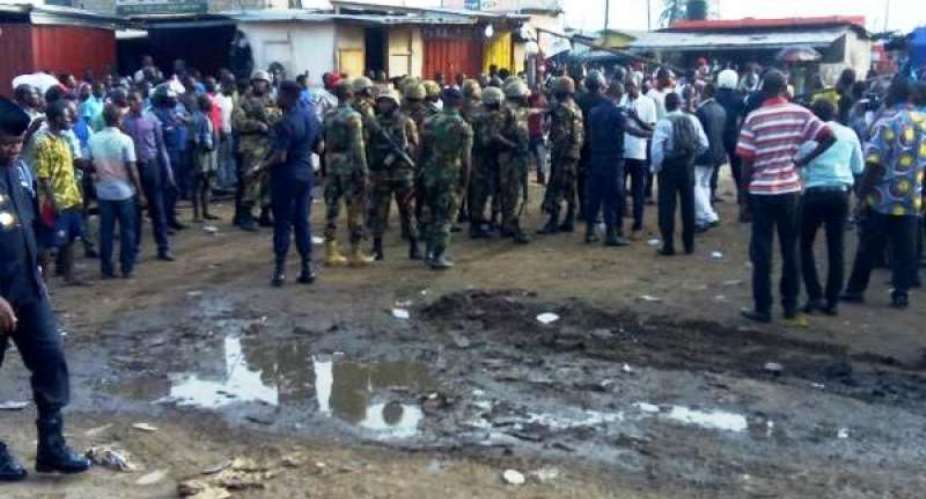It’s an undeniable fact that various conflicts have occurred among different tribes in parts of the three Northern regions; however, linking every act of violence to ethnicity because it happened among Northerners residing in places outside their home region is stereotypical and does not aid in peace building.
A principle in journalism states: “if it bleeds, it leads” – a few days ago, the media threw its spotlight on Agbogbloshie – some misunderstanding had occurred – initially, it was reported that the misunderstanding was rooted in ethnicity – between Komkombas and Dagombas. Later, a press release from the office of the Regent of Dagbon and Acting President of the Dagbon Traditional Council debunks media reports of ethnicity as the root cause of the violence; instead, some individual was allegedly lynched for theft.
Two journalists and authors – Ross Howard and Fiona Lloyd in the introduction of “Gender, Conflict & Journalism: A Handbook for South Asia” stated: "as journalists, words are our most powerful tools, and we should use these tools to build understanding rather than create fears and myths.” The reportage of the situation in question could have thrown some parts of the Northern Region in to trouble.
Media reportage of conflicts is critical in peace building; but the media has been the butt of criticisms for its reportage on conflict. It has been argued by media scholars that the impact of the media on conflict is greater than the impact of the media on conflict prevention and peace building. In the words of peace journalism scholar, Gadi Wolfsfeld, “ in the fundamental contradictions between the nature of peace process and news values, the media often play a destructive role in attempts at making peace”
Gadi Wolfsfeld further argues that, four values influence media reportage on conflict: immediacy, drama, simplicity and ethnocentrism. In light of the reportage of the misunderstanding that occurred in Agbogbloshie, it’s easy to read between the lines: some competition to report first – immediacy; there were some killings – drama; simplicity – alleged two-sided conflict; and, ethnocentrism – some past conflict between the two sides.
With reference to the tribes of Northern Region of Ghana there’re some distinctive features that a majority of people are unaware of. For instance there’re tribes that have historical relationships which still continues today – tribes have play mates – between Dagaos and Gurunes, among Gonjas, Kassenas and Sissalas; and, Komkombas and Bimobas; just to mention a few.
Their relationship knows no age nor sex – a Gurune could call a Dagao “baazu” to wit, “dog head” and there’re no hard feelings at all. The same way a Dagao could call Gurune a “slave” and the only response is, “who is your slave? Come and wipe the feet of your master before you continue in your illusion”.
Media plurality is good; but plurality shouldn’t become the altar on which cardinal principles of journalism are sacrificed. These principles include: humanity, impartiality, accuracy, independence and accountability. Aidan White, former General Secretary of International Federation of Journalists explains: “as a journalist, you’re responsible for looking and thinking about other sides of a story; there’re usually more than one or two sides of a story”.
The roles of the media are crucial to the holistic development of society. These roles can be constructive and destructive. There is the need for media houses and professionals to get their acts in building a constructive society in the course reporting of volatile issues.
Conflicts can never be done away with, but in conflict reportage let us focus on peace building.
A freelance journalist: [email protected]/[email protected]





 Minority will expose the beneficial owners of SML, recover funds paid to company...
Minority will expose the beneficial owners of SML, recover funds paid to company...
 Prof. Opoku-Agyemang has ‘decapitated’ the NPP’s strategies; don’t take them ser...
Prof. Opoku-Agyemang has ‘decapitated’ the NPP’s strategies; don’t take them ser...
 Abubakar Tahiru: Ghanaian environmental activist sets world record by hugging 1,...
Abubakar Tahiru: Ghanaian environmental activist sets world record by hugging 1,...
 Prof. Naana Opoku-Agyemang will serve you with dignity, courage, and integrity a...
Prof. Naana Opoku-Agyemang will serve you with dignity, courage, and integrity a...
 Rectify salary anomalies to reduce tension and possible strike action in public ...
Rectify salary anomalies to reduce tension and possible strike action in public ...
 Stop all projects and fix ‘dumsor’ — Professor Charles Marfo to Akufo-Addo
Stop all projects and fix ‘dumsor’ — Professor Charles Marfo to Akufo-Addo
 Blue and white painted schools will attract dirt shortly – Kofi Asare
Blue and white painted schools will attract dirt shortly – Kofi Asare
 I endorse cost-sharing for free SHS, we should prioritise to know who can pay - ...
I endorse cost-sharing for free SHS, we should prioritise to know who can pay - ...
 See the four arsonists who petrol-bombed Labone-based CMG
See the four arsonists who petrol-bombed Labone-based CMG
 Mahama coming back because Akufo-Addo has failed, he hasn't performed more than ...
Mahama coming back because Akufo-Addo has failed, he hasn't performed more than ...
